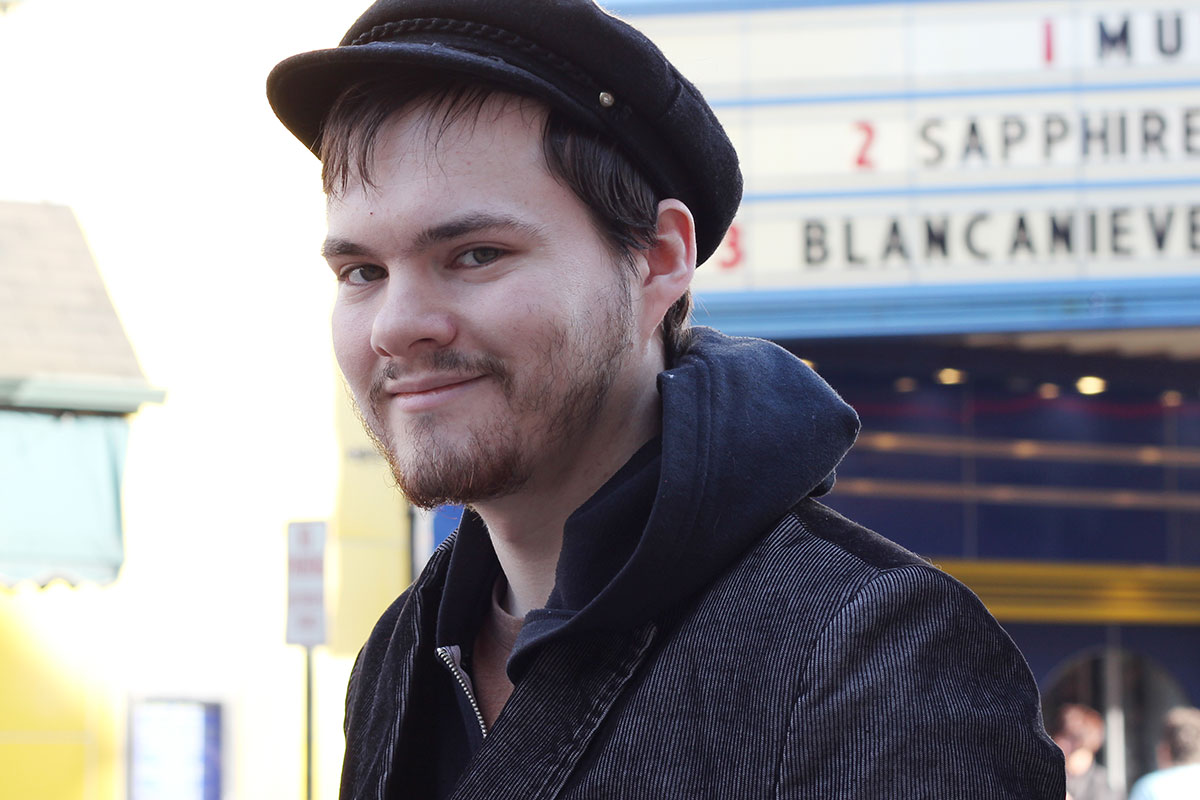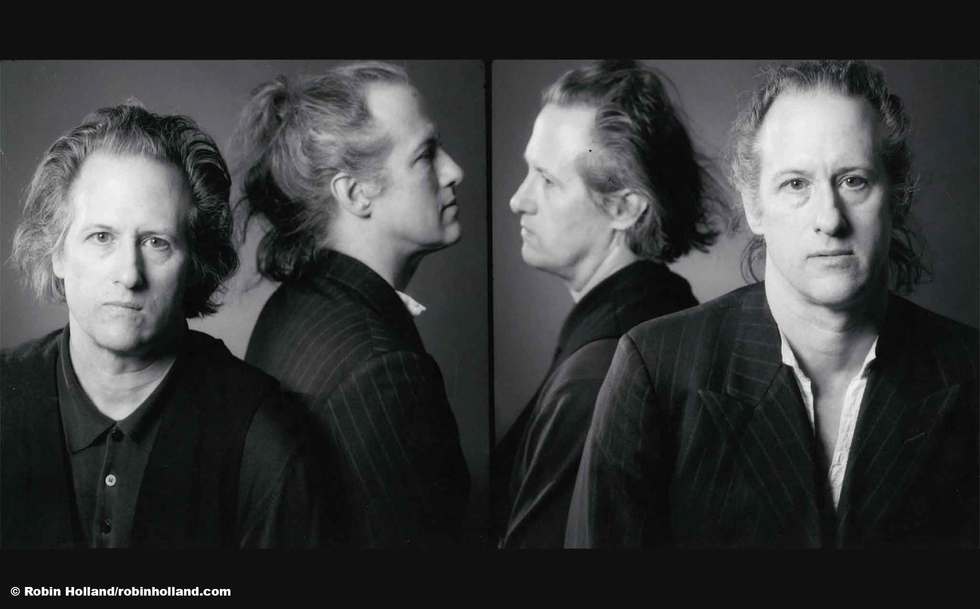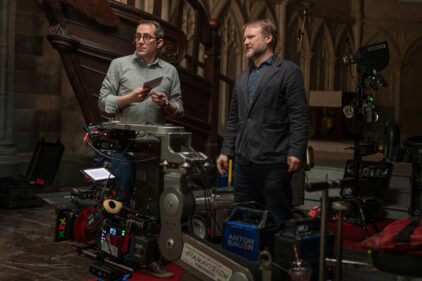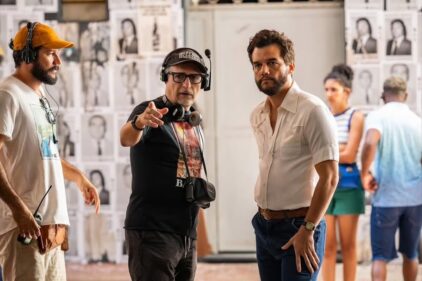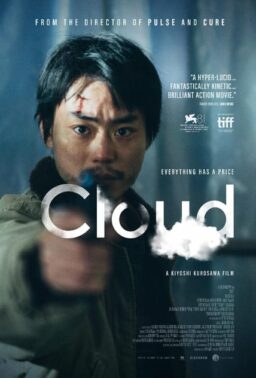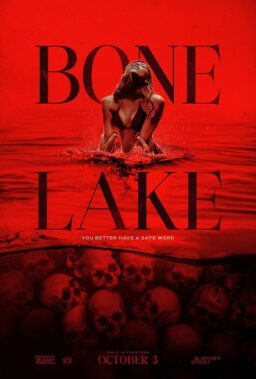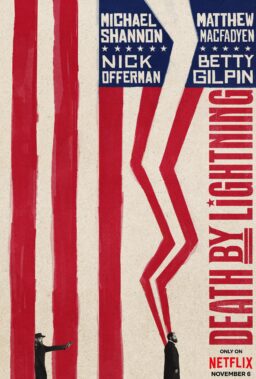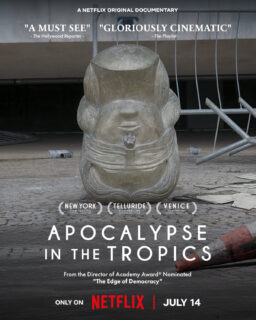Let me tell you a fairy tale. Two brothers
are raised in a house with big windows, under the care of a man. They can look
at the world outside but never go outside and see it. The man says he’s keeping
them safe, and he tells the boys everything there is to know about the world
outside: the color of plants, the sound
of the wind, the shapes and sizes of objects the way people behave, and the way
emotions feel and what they mean. The brothers are intrigued by the man’s explanations,
but they can’t help feeling there’s more to the world than what the man tells
them. One night, while the man is asleep, the brothers look closely at him and
discover that his skin is made of wool, like a sweater. They find a loose
thread and pull, revealing a whole universe in miniature inside the man’s
stomach. But it’s different than how the man described the world to them, and
looks different than the one outside their window. Shapes are different, sounds
are louder and quieter than the man described, and plants don’t look like they do out
the window. In here, inside the man, everything is twisted up and strange; everything is beautifully ugly; every color is more vivid. Instead of people there are puppets. The brothers look into
the eyes of the puppets and suddenly they knew everything about humans and
more. The puppets taught them everything there was to know about people, things
the man never bothered trying to explain.

This is the story I’ve always told myself
about filmmakers/animators/magicians Stephen & Timothy Quay. How else to
explain their inhuman intelligence, their avant garde rhythms, that they were
able to conjure a universe so alike and yet so completely different from our own.
So gorgeous, yet so horrific. So fantastic, yet so grounded in the tactile
realities of human, plant and animal. Since their debut in 1979, they’ve slowly
come to infect our reality with the influence of theirs. They reached into
fairy tales for inspiration and, pulled out a secret aesthetic history of the
world that only they could see. They’re lovingly, painstakingly crafted short
films have influenced everyone from Tim Burton to Terry Gilliam to Christopher
Nolan, who has bankrolled an awe-inspiring 35mm retrospective of some of their
major works currently playing New York’s Film Forum. He’s also completed a
short, sweet documentary on the brothers (simply called “Quay”), filming them
with a 35mm camera in their home studio, the first time the director has shot
one of his own movies since his 1998 debut “The Following”. That is the kind of
affection and dedication the Quays inspire. Right now in film schools across
the country there’s one kid in class whose favourite film is “Street of
Crocodiles”, and though she may never have the success of the Kubrick or Leone
fans, she’ll tug on the sweater that conceals reality until she really
understands the way art can unearth the secrets of humanity.
I interviewed them at Film Forum and they
tell me they’re always after “elusive forms” and that puppets offer a way into
a “contemplative realm,” adding a little weight to my fairy tale. Everything
about the Quays is distinct, from their surreal backdrops to their spindly,
whisper-soft voices, to the way their camera moves. The American-born,
England-educated identical twins speak in a splendid hybrid accent, and the way
say the word “puppet” is completely unique. Once you’ve heard them talk about
their “poppits,” you’ll never forget it. Apt, because those puppets are what
people will remember first when they hear the word “Quay.” “The eyes are the
soul of the puppet” one of them says, early in Nolan’s film. That’s why the
brothers coat their puppet’s eyes in olive oil, to keep them shining and
looking right back into the viewer’s soul. One of the many special touches that
only the brothers apply to their work. In conversation with Nolan on Wednesday
night (who has used Quays’ films as visual inspiration for his own work), at
the very start of their retrospective, the brothers outlined some of their mad
method: Keeping cameras aimed at mirrors pointed out their studio window for a
full day to capture light just right; having to move the dolly and shift focus
imperceptibly a hundred times over for a few seconds of camera movement;
cutting the top of a doll’s head off to fill it with straw in order to let
light come through the eyes with the right intensity. Happy accidents were
their masters, influencing and changing their films for the better at every
turn. Anyone who’s seen their films knows that every accident made their work
that much more special. “In Absentia”, a work commissioned to compliment a new
piece of music by Karlheinz Stockhausen didn’t appear to fit the music at all,
until they moved it 25 seconds to the right on their editing bay. Suddenly, it
made sense. The German composer had only one note for the brothers when he saw
the finished product. “You know guys, I’d like a little bit of blue…somewhere…”
They looked at each other for a long moment, trying to figure out how to
respond to the mad genius standing in their studio. When he left they happily
obliged, adding some to the end credits. Another happy accident.

What scares the Quays, they who seem to
write our nightmares for us? I was curious to know after having been watching
their work since I was a teenager. “Other than losing your teeth?” They both
laugh. They always laugh together in our short conversation. “Violence.
Unacceptable violence. You know that it can happen so quickly…” Which is why
they steer away from it in their films. “What we value in other people’s work
is that sense of genuine disquiet and unease. You accept violence in Hitchcock,
but what we prefer is a malaise. This feeling that’s underneath you, behind
your back, it’s the undertow.” Pressed for a modern example, they come up with
season 1 of True Detective. “It’s a very subtle language and we admire it
because we have no desire to be violent in our own work.” They also fear for
the future. Though they’ve worked beyond puppetry, designing theatre, ballet,
opera and most recently a video game. Unfortunately, it’s on “pause.” “The
money ran out.” They offer, clearly disappointed. It would have been a
marvelous opportunity to see what these old school storytellers could have
done. “We won’t do CGI.” Their latest project is a feature length movie based
on Bruno Schulz’s “The Sanatorium Under The Sign of the Hourglass” (which would
be 75% animation and 25% live action). They’ve built some of the puppets and
sets and they’ve shot 20 minutes of it, but need funding to finish it. ”You
have to pay for the studio or we’ll lose everything. The freedom to make this
kind of thing. It’s an urgent concern. You’re on the edge of eclipse.” Says
Timothy, but Stephen corrects him. “Extinction.” If every filmmaker was as
forthcoming as Nolan about the influence the brothers have had on their work,
they wouldn’t need to worry about money. Just one gesture in particular, of a
fluttering motion of body parts, so fast they appear to be caught between
dimensions, has been imitated more times than one could reasonable count.
Hopefully the retro and the beautiful documentary will rekindle interest in the
humble geniuses. I like to think we’ve earned the gift of a Quay feature, and
they’ve more than earned the money to make it. They only expanded the
definition of animation.
Their world is born of endless, ornate
invention. Every frame is packed with singularly creepy and gorgeous detail.
Schulz, who provided the inspiration for their watershed “Street of
Crocodiles”, talked about the essential poetry of the everyday (“Honor the
marginalia, is what we’ve always said.”), and that’s precisely what the Quays
manifest. The simplest colors, plants, shapes, textures and ideas are combined
in shocking ways. The inch of dust and gold-hued mildew that grows on a mirror
suddenly becomes part of the way their characters view themselves, and by
extension the world around them. Signs of age, of a past life for every puppet,
are a form of respect, they say, to the original, anonymous creators of the
objects they repurpose. The Brothers see the work of thousands of long-dead
unappreciated craftsman as essential to the human experience, and by thrusting
them together, giving objects like screws, combs, ladders, and pencil tips the
same life that Walt Disney gave his talking animals, they honor the efforts of
every architect, factory worker and machine shop hand who never got to sign his
name to the products he created to help the world move forward. The eyes are
the soul of the puppet, and the films of the Brothers Quay alert their audience
to the soul in every discarded, forgotten object. They see what few others can,
they see inside the heart of a man-made world, and to the rest of us they relate
the secret information to which they’ve become privy. Their perfectly crafted
fairy tale world mirrors ours and helps the rest of us see the beauty all
around us.
